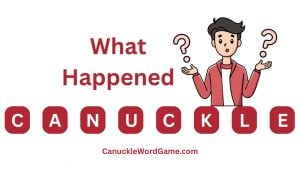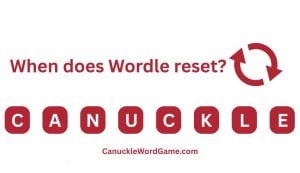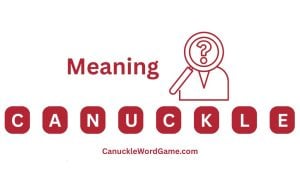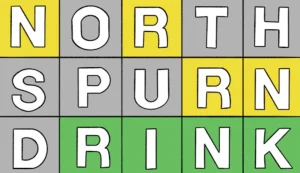How to Play Quordle? Complete Guide and Tips
Quordle challenges players to solve four five-letter words simultaneously using nine guesses, applying each word guess across all four puzzle grids with color-coded feedback.
Quordle represents a significant evolution from the original Wordle game, multiplying the challenge by four while maintaining the core mechanics that made word puzzles so popular. The game was created by David Mah and later refined by Freddie Meyer, attracting millions of daily players who seek a more demanding word puzzle experience.
Players must demonstrate strategic thinking, vocabulary knowledge, and pattern recognition skills to succeed consistently at this enhanced word game format.
What is Quordle and How Does It Work
Quordle is a word-guessing game that presents four separate five-letter word puzzles simultaneously. Players receive nine attempts to solve all four words, with each guess applying to every puzzle grid at once. The game uses the same color-coding system as Wordle, where green squares indicate correct letters in the right position, yellow squares show correct letters in wrong positions, and gray squares represent letters not found in that particular word.
The fundamental challenge lies in managing information across multiple puzzle grids while making strategic word choices that benefit the overall solving process. Each word you guess appears in all four grids, but the feedback differs for each puzzle depending on whether letters appear in those specific target words. This creates a complex decision-making environment where players must balance gathering information with making targeted guesses for individual puzzles.
The game operates on a daily schedule, presenting new sets of four words each day for all players worldwide. Additionally, practice modes allow unlimited gameplay for those wanting to improve their skills without waiting for the next daily challenge. The scoring system tracks completion rates and guess efficiency, encouraging players to solve all four puzzles within the nine-guess limit.
Game Interface and Visual Elements
The Quordle interface displays four separate grids arranged in a two-by-two formation, each containing five-letter word spaces. Players type words using an on-screen keyboard that provides visual feedback about letter usage across all four puzzles. The keyboard shows quartered sections for each key, indicating which puzzles contain specific letters through color-coded segments.
When examining the game board, players can scroll between different sections to view all available guess rows. The interface highlights completed puzzles by turning the entire grid green, allowing players to focus their remaining guesses on unsolved words. This visual system helps manage the complexity of tracking four separate puzzles simultaneously while maintaining clear progress indicators.
Step-by-Step Instructions for Playing Quordle
Getting Started with Your First Game
Visit the official Quordle website or access it through the Merriam-Webster platform where the game is now hosted. The game loads immediately without registration requirements, presenting the four-grid interface ready for your first word guess. Unlike some word games, Quordle provides no tutorial or introduction screens, placing you directly into the puzzle-solving environment.
Type your first five-letter word using either the on-screen keyboard or your device’s physical keyboard. The word must be valid in the English language, as invalid words will display red letters indicating the input error. Press Enter to submit your guess and observe how the letters change colors across all four puzzle grids.
Study the feedback patterns carefully before making your second guess. Green letters show correct positions and should guide your next word choices, while yellow letters indicate presence in the word but wrong placement. Gray letters eliminate possibilities across all four puzzles, helping narrow down potential solutions.
Making Strategic Word Choices
Your opening word should contain common vowels and consonants to maximize information gathering across all four puzzles. Popular starting words include “AUDIO,” “STARE,” “RAISE,” and “ADIEU” because they incorporate multiple vowels and frequently used consonants. These words provide broad coverage of the English language’s most common letters, giving you substantial feedback for subsequent guesses.
Focus on words containing different letter combinations for your second and third guesses if your opening word doesn’t provide strong leads. Some players use systematic three-word opening strategies like “AUDIO, STERN, CHIMP” or “CHOMP, GRIND, SALTY” to cover fifteen different letters quickly. This approach sacrifices early solving opportunities but provides comprehensive letter coverage for the remaining guesses.
After gathering initial information, shift your strategy toward solving individual puzzles rather than continuing to explore letters. Identify which puzzle has the most green and yellow letters, then focus your next guess on completing that specific word. Solving one puzzle early reduces complexity and often reveals additional information helpful for the remaining three words.
Managing Multiple Puzzle Grids
Track letter patterns across all four grids simultaneously by noting which letters appear in multiple puzzles. Letters showing yellow in several grids often indicate common word patterns or shared letter positions. This cross-grid analysis helps identify potential word families or similar letter arrangements that can guide your guessing strategy.
Prioritize puzzles with the most positive feedback when choosing your next word. Count green and yellow squares in each grid, then focus on the puzzle closest to completion. This targeted approach prevents wasting guesses on puzzles with minimal progress while maximizing your chances of early solves.
Use elimination principles to narrow possibilities in each grid. Letters marked gray in one puzzle cannot appear in that word, but they might still be valid for other puzzles. This differential elimination process requires careful attention to each grid’s specific feedback patterns.
Winning Strategies and Advanced Tactics
The Information Gathering Approach
Professional Quordle players often employ systematic information gathering during their first three guesses. This strategy involves selecting words that cover the maximum number of common letters without regard for solving individual puzzles initially. The goal is accumulating enough letter knowledge to solve multiple puzzles efficiently in the remaining six guesses.
Effective letter coverage focuses on the fifteen most common letters in five-letter English words. Strategies like “SHIFT, BAKED, WRONG, CLUMP” cover twenty of the top twenty-one most common letters, leaving only uncommon letters like Q, Z, X, J, and V unexplored. This comprehensive approach works well for players who prefer methodical puzzle-solving over intuitive guessing.
Consider vowel distribution when planning your information-gathering phase. Words like “AUDIO” provide four of the five vowels in a single guess, immediately revealing vowel patterns across all four puzzles. Follow up with consonant-heavy words to complete your letter knowledge before attempting specific puzzle solutions.
The Focused Solving Method
Alternative strategies emphasize early puzzle completion over comprehensive letter exploration. This approach identifies the most promising puzzle after one or two guesses, then dedicates subsequent attempts to solving that specific word. Successfully completing one puzzle reduces cognitive load and often provides letter insights for remaining challenges.
Select your target puzzle based on green letter count and logical word patterns. Puzzles with two or three green letters in logical positions often yield to focused attention more readily than those with scattered yellow letters. Common word patterns like “-IGHT” or “ST-” can guide targeted guessing for specific grids.
Maintain awareness of other puzzles while focusing on one primary target. Sometimes attempting to solve one word reveals unexpected information about others, creating opportunities for multi-puzzle solutions. Balance focused attention with periodic evaluation of all four grids to avoid missing obvious solutions.
Cross-Board Pattern Recognition
Advanced players recognize letter patterns that span multiple puzzle grids. Words sharing common prefixes, suffixes, or internal letter combinations often appear together in Quordle puzzles. Identifying these patterns early can lead to simultaneous solutions across multiple grids.
Look for repeated letter patterns in yellow square feedback. If multiple puzzles show the same letter in yellow, consider words that place that letter in different positions across various grids. This technique helps solve multiple puzzles efficiently while avoiding redundant letter placement.
Use successful letter placements in one puzzle to inform guesses for others. Green letters in solved words often appear in different positions within unsolved puzzles. This cross-referencing approach maximizes the value of each successful solve.
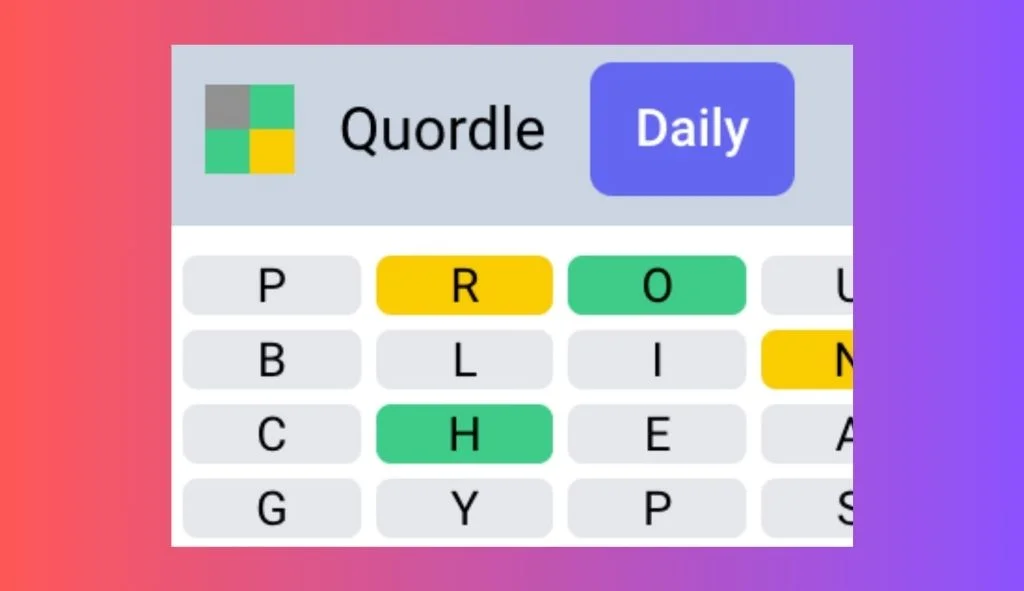
Common Mistakes and How to Avoid Them
Overcomplicating Early Guesses
Many beginners attempt to solve individual puzzles too early in the game, leading to inefficient guess usage. Focusing on specific words before gathering sufficient letter information often results in failed attempts and wasted opportunities. Instead, prioritize information gathering during your first two or three guesses before shifting to targeted solving.
Avoid repeating letters unnecessarily in early guesses unless you have strong evidence for letter repetition. Words with repeated letters provide less information than words using five different letters. Save repeated letter exploration for later guesses when you have specific evidence suggesting double letters in particular puzzles.
Resist the temptation to guess variants of words that partially work. If you identify a pattern like “-IGHT,” avoid immediately guessing “MIGHT,” “NIGHT,” “LIGHT,” and “SIGHT” in sequence. Instead, use other guesses to eliminate letters and narrow possibilities before committing to pattern-based solutions.
Neglecting Cross-Grid Analysis
Players often focus too intensely on individual grids while ignoring valuable information from other puzzles. Each guess provides feedback across all four grids, and successful players integrate this information rather than treating puzzles independently. Develop habits of scanning all four grids after each guess to identify patterns and opportunities.
Failing to track eliminated letters across all puzzles leads to inefficient guessing. Letters marked gray in any puzzle should inform your choices for all remaining attempts. Maintain mental or written notes about eliminated letters to avoid redundant exploration.
Ignore the keyboard’s quartered display system at your own risk. The visual feedback showing which puzzles contain specific letters provides crucial information for strategic planning. Learn to read these indicators quickly to make informed decisions about letter placement and word selection.
Poor Time Management and Guess Allocation
Spending too many guesses on information gathering without shifting to solving mode often results in incomplete games. While comprehensive letter exploration has value, successful players know when to transition from exploration to execution. Plan to begin targeted solving by your fourth or fifth guess to ensure adequate attempts for completion.
Attempting to solve the most difficult puzzle first wastes valuable guesses on low-probability solutions. Focus your solving efforts on puzzles with the strongest positive feedback rather than the most challenging ones. Complete easier puzzles first to build momentum and reduce complexity.
Failing to adjust strategy based on game progress leads to missed opportunities. If your information-gathering approach isn’t providing clear paths forward, switch to focused solving earlier than planned. Flexibility in strategic application often determines success in challenging puzzles.
Frequently Asked Questions About Quordle
How Many Attempts Do You Get in Quordle?
Players receive nine attempts to solve all four five-letter words in standard Quordle. This represents an increase from Wordle’s six guesses, acknowledging the additional challenge of solving multiple puzzles simultaneously. Some game modes offer ten attempts instead of nine, providing slightly more flexibility for completion.
The guess limit applies to the entire game rather than individual puzzles. Once you solve a puzzle, no additional guesses are consumed for that specific word, allowing you to focus remaining attempts on unsolved challenges1. This system rewards early puzzle completion and efficient guess management.
Practice modes typically follow the same nine-guess structure as daily games. However, unlimited practice games allow players to experiment with different strategies without waiting for new daily puzzles. This flexibility helps develop skills and test approaches before attempting official daily challenges.
What Makes Quordle Different from Wordle?
Quordle requires solving four words simultaneously instead of Wordle’s single word challenge. Each guess applies to all four puzzle grids, creating complex decision-making scenarios where players must balance information gathering with targeted solving. This multiplication of challenge significantly increases the cognitive load compared to traditional Wordle gameplay.
The expanded guess limit accommodates the increased difficulty while maintaining time pressure. Nine attempts for four words provides less flexibility per word than Wordle’s six attempts for one word. This constraint forces players to develop more efficient strategies and better word selection skills.
Visual feedback systems differ substantially between the games. Quordle’s keyboard displays quartered sections showing which puzzles contain specific letters, while Wordle uses simpler single-color feedback. This enhanced information display helps players track multiple puzzle states simultaneously.
Can You Play Quordle Multiple Times Per Day?
Daily Quordle provides one official puzzle per day, similar to Wordle’s schedule. These daily games feature the same four words for all players worldwide, enabling social sharing and comparison of results. The daily format maintains the communal aspect that made word puzzles so popular on social media platforms.
Practice modes allow unlimited gameplay beyond the daily challenge. Players can access randomly generated four-word sets as frequently as desired for skill development and entertainment. This unlimited access helps players improve their strategies without waiting for new daily content.
Some platforms offer additional game modes with different rules or time constraints. These variations might include different word lengths, modified guess limits, or themed word sets. However, the standard daily Quordle remains the most popular format among regular players.
What Are the Best Starting Words for Quordle?
Effective starting words contain multiple vowels and common consonants to maximize information across all four puzzles. Popular choices include “AUDIO,” “ADIEU,” “STARE,” “RAISE,” and “CRANE” because they incorporate frequently used letters. These words provide broad letter coverage essential for understanding puzzle patterns early in the game.
Some players prefer systematic three-word opening strategies that cover fifteen different letters. Examples include “AUDIO, STERN, CHIMP” or “STARE, PINCH, MOULD” combinations. These approaches sacrifice early solving opportunities for comprehensive letter knowledge that guides efficient completion strategies.
Avoid starting words with uncommon letters like Q, X, Z, or J unless you have specific reasons to test for these letters. Focus on letters that appear frequently in English five-letter words to maximize the probability of useful feedback. Save uncommon letter exploration for later guesses when other options have been eliminated.

